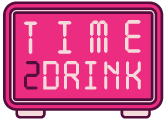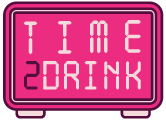The Fascinating History of Cocktails: From Colonial Punch to Modern Mixology
The history of cocktails is rich, colorful, and filled with tales of creativity and culture that span centuries. Cocktails have evolved from simple mixtures to sophisticated concoctions, reflecting societal changes, innovations in mixology, and evolving tastes. Here is a detailed look at the origins and development of the cocktail.
Early Beginnings: Colonial America and Punch Bowls
The origins of the cocktail can be traced back to the 17th and 18th centuries. During this period, punch— a mixture of spirits, fruit juices, sugar, water, and spices—became a popular social drink. The concept of combining different ingredients to create a beverage was not new, but punch marked the beginning of an approach to alcoholic mixtures that would eventually become the cocktail.
Punch bowls were often the centerpiece at gatherings, especially in colonial America and Europe, where people would experiment with different flavors and quantities of ingredients. However, these early concoctions were usually served in large communal bowls rather than individually.
The First Mention of a "Cocktail" (1806)
The first recorded definition of a cocktail dates back to May 13, 1806. It was published in a Hudson, New York newspaper called "The Balance and Columbian Repository." The editor responded to a reader's question, defining a cocktail as a "stimulating liquor composed of spirits of any kind, sugar, water, and bitters." This combination is similar to what we now know as the Old Fashioned, one of the oldest and most classic cocktails.
The definition provided in 1806 highlighted the key components of early cocktails: spirit, sugar, water, and bitters. This formula set the foundation for what we now recognize as the traditional structure of many cocktails.
Cocktail Culture in the 19th Century
During the 19th century, cocktail culture began to take shape. The evolution of cocktail-making was closely linked to the expansion of taverns and bars across America. Bartenders and mixologists started to gain prominence as they experimented with different combinations of spirits and ingredients.
One of the most famous bartenders of this era was Jerry Thomas, often called the "father of American mixology." In 1862, Thomas published the first cocktail recipe book, "How to Mix Drinks, or The Bon Vivant's Companion." His book contained recipes for various cocktails, punches, cobblers, flips, and more. This publication helped formalize cocktail-making and brought greater consistency to recipes that were often improvised by bartenders.
Thomas is particularly famous for his "Blue Blazer," a flamboyant drink involving flaming whiskey poured between two mugs, which showcased the artistry and showmanship that began to define the cocktail culture of the time.
Prohibition and the Rise of Speakeasies (1920-1933)
The period of Prohibition in the United States, from 1920 to 1933, had a significant impact on the evolution of cocktails. With the sale and production of alcoholic beverages banned, people began to find creative ways to make and consume alcohol. Cocktails were used to mask the harsh taste of poorly made, often illegally produced spirits, commonly known as "bathtub gin."
This era led to the rise of speakeasies—hidden bars where people could secretly drink. Bartenders became more inventive, using sugar, juices, and bitters to mask the inferior quality of the alcohol they were serving. Classic cocktails like the Bee's Knees and the Sidecar gained popularity during this time, as they were designed to make unrefined spirits more palatable.
The Golden Age of Cocktails (Post-Prohibition)
After Prohibition ended in 1933, there was a surge in cocktail culture. The late 1930s through the 1960s is often referred to as the "Golden Age of Cocktails." During this period, bartending became a respected profession, and cocktails became a symbol of sophistication and elegance. Drinks like the Martini, Manhattan, and Daiquiri became iconic, representing glamour and the high life, particularly in Hollywood films.
Tiki culture also emerged during this period, spearheaded by figures like Donn Beach (Donn the Beachcomber) and Victor Bergeron (Trader Vic). They popularized rum-based drinks, often served in elaborate mugs with tropical garnishes. Drinks like the Mai Tai and Zombie became synonymous with this escapist, Polynesian-inspired trend.
Decline and Revival (1970s - Present)
By the 1970s and 1980s, cocktail culture experienced a decline. The rise of pre-made mixers and a preference for simpler drinks led to a loss of traditional mixology skills. However, this trend began to reverse in the 1990s, with a renewed interest in craft cocktails and quality ingredients.
The modern cocktail revival emphasized fresh ingredients, craft spirits, and classic techniques. Bartenders began rediscovering forgotten recipes, and speakeasy-style bars made a comeback. The craft cocktail movement led to a renaissance in mixology, with bartenders pushing boundaries by experimenting with new flavors, techniques, and presentation styles.
Today, cocktail culture is thriving, with a focus on both innovation and honoring the classics. The rise of molecular mixology, farm-to-table ingredients, and the use of artisanal spirits have elevated the craft to new heights, making bartenders akin to chefs in their creativity and attention to detail.
Conclusion
The history of cocktails is a reflection of human creativity, adaptability, and cultural trends. From colonial punch bowls to modern-day craft cocktails, each era has contributed to the rich tapestry of flavors and traditions that we associate with cocktails today. Cocktails have transcended their humble origins to become symbols of celebration, socializing, and art, and their evolution is still ongoing as bartenders continue to innovate and inspire.
Whether it's the Old Fashioned, the Martini, or the latest molecular creation, the cocktail remains a testament to our enduring love of good spirits, great company, and the joy of crafting something truly special.






